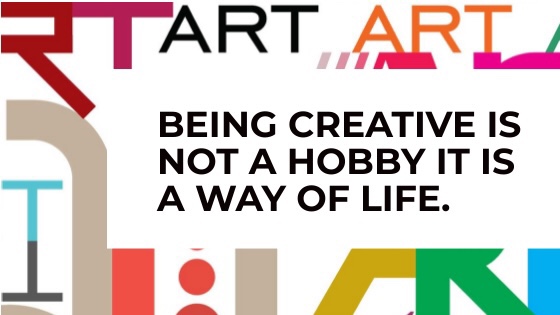Every parent of a school-age child has a priceless collection of drawings, paintings, and macaroni collages taped to the wall above their desk or stuck all over the refrigerator.
We cherish them regardless of their actual artistic merit, but some kids really do have an uncanny way with color and composition – not to mention a vast output.
Whether your kid is simply expressing themself or developing a natural talent, here are 15 ways to foster a passion for art in your school-age child:
Stock up on art supplies
Designate an easy-to-reach drawer for supplies like pencils, child-safe paints and crayons, markers, clay, wire, brushes, sponges, paper, canvas, cardboard, fabric. No need to spend a bundle at the art supply store; a lot of these supplies can be found in your recycling bin, junk drawer, or work bench.
Encourage experimentation, but don’t push it
Maybe your 7-year-old only wants to draw action figures in pencil and has no interest in paints. That’s fine. This kind of concentrated focus is not uncommon for this age. Your job is to expose their to lots of options, so suggest different supplies or projects to keep it fresh, then let them pick and choose.
Resist the urge to set the creative agenda
Kids generally have plenty of ideas they want to express in their art. And talented kids in particular often don’t respond well to direction, preferring to follow their own muse rather than “work” on an assigned project. Let your child follow their whims at home; they may not have that flexibility at school.
Your job is to help your child execute their vision. If they want to make their own cartoon book, offer tracing paper, pens, and pencils but let them take it from there. They’ll tell you if they want help or ideas.
Avoid becoming an art critic
Comment on how your child works, instead of praising or criticizing the end product. “You like to add a lot of detail to your drawings” or “You’re loving those tempera paints, aren’t you?” rather than, “This painting should be hung in an art gallery!” This helps your child feel free to try different things without the pressure of pleasing you or anyone else.
Talk with your child about his art
At this age, every picture has a story behind it. Instead of asking: “What’s that?” as many adults do, ask your child, “What’s happening in your picture?” Open-ended questions may lead to a whole narrative.
Display and notice the artwork of all your children
Singling out the “talented” child may erode your other kids’ self-esteem or stifle their artistic interest. If you have a child with real artistic talent, teach them to respect the work of others and that art can be approached in lots of different ways. Doris’s Dinosaur by Rosemary Wells is a book that handles this issue with insight and sensitivity.
Don’t correct your child’s artwork
At this age, kids become more self-conscious as their hand-eye coordination develops and the pressure mounts to make things look realistic. Don’t adjust wrong proportions, show a child “the right way” to paint, or “fix” artwork. A good rule of thumb: Offer assistance if asked; otherwise it’s best to stay out of it.
Find new places to do big, messy art projects
Check out art classes, clay studios, or children’s museums that have the extra space and equipment to work on projects you can’t deal with at home. Bonus: Someone else gets to clean up the mess.
Supplement what’s going on at school
Maybe the art instruction at your child’s school is uninspired, or maybe the school has axed art classes altogether because of budget cutbacks. You can fill in the gaps.
Sign your child up for an after-school or weekend class making jewelry, creating puppets, designing cartoons, drawing, painting, or working with wood, clay, or wire. Local libraries often have free or cheap programs for kids.
Plan a trip to an art museum, gallery, or studio
Aim for off-peak times so you won’t be battling the crowds. And don’t expect to spend hours admiring a Monet – it might be smart to hit a free day so you won’t feel the pressure to get your money’s worth.
Choose an exhibit you think might grab a child’s attention, such as Calder mobiles or Chihuly glass installations. Ask for their input: At this age they may have distinct opinions about what they’re interested in checking out, such as a cartoon art museum or a traveling anime exhibit. Bring along some pencils and a pad and invite your child to sketch something that interests them.
Flip through arty picture books
Scan the shelves at your library for picture books about art and read them together. Art Dog, by Thacher Hurd, and Katie Meets the Impressionists, by James Mayhew, are fun examples. Look at book illustrations and try to figure out what an artist used to create the images – pen and ink, watercolor and pencil, computer graphics, collage. One may inspire an art project at home.
Watch an artist at work
Check out street fairs, festivals, and open studios, where your child can see artists in action. This way, they’ll realize that painting isn’t just for kids, that being an artist can be a lifelong pursuit.
Work art projects into everyday life
Take chalk to the playground so your kid can doodle when they get tired of the swing set. Look for objects on the beach or in the woods and bring them home so your child can make them into a collage or sculpture. Make sand paintings or stone and stick sculptures together while you’re out and about. Incorporate art into cooking by making bagel faces or decorating cookies.
Be open to zany ideas
Often, kids use typical art materials in new ways or want to get creative with stuff that isn’t really an art supply. Maybe your child prefers to paint on fabric instead of paper. Or maybe they want to build a sculpture out of empty tissue boxes. Once you’ve made it clear what’s off-limits – clothes, for instance – go with the flow.
Let mistakes happen
Some of the most creative work comes when things don’t go according to plan. So encourage your child to try new things and assure them it’s fine to get things “wrong.” Kids can be rigid or inhibited about their work or resist taking risks because they’re afraid they’ll fail.
Whether your child is a typical grade-school dabbler or an emerging artist, they can be sensitive to criticism or eager for praise. Remind a perfectionist that exploration is the name of the game.
If your child asks, “Do you like my drawing?” try asking, “Do you like it, honey?” and see where the conversation goes. Often a child does like what they’ve made, so you can remind them that they’re the most important person to please.



